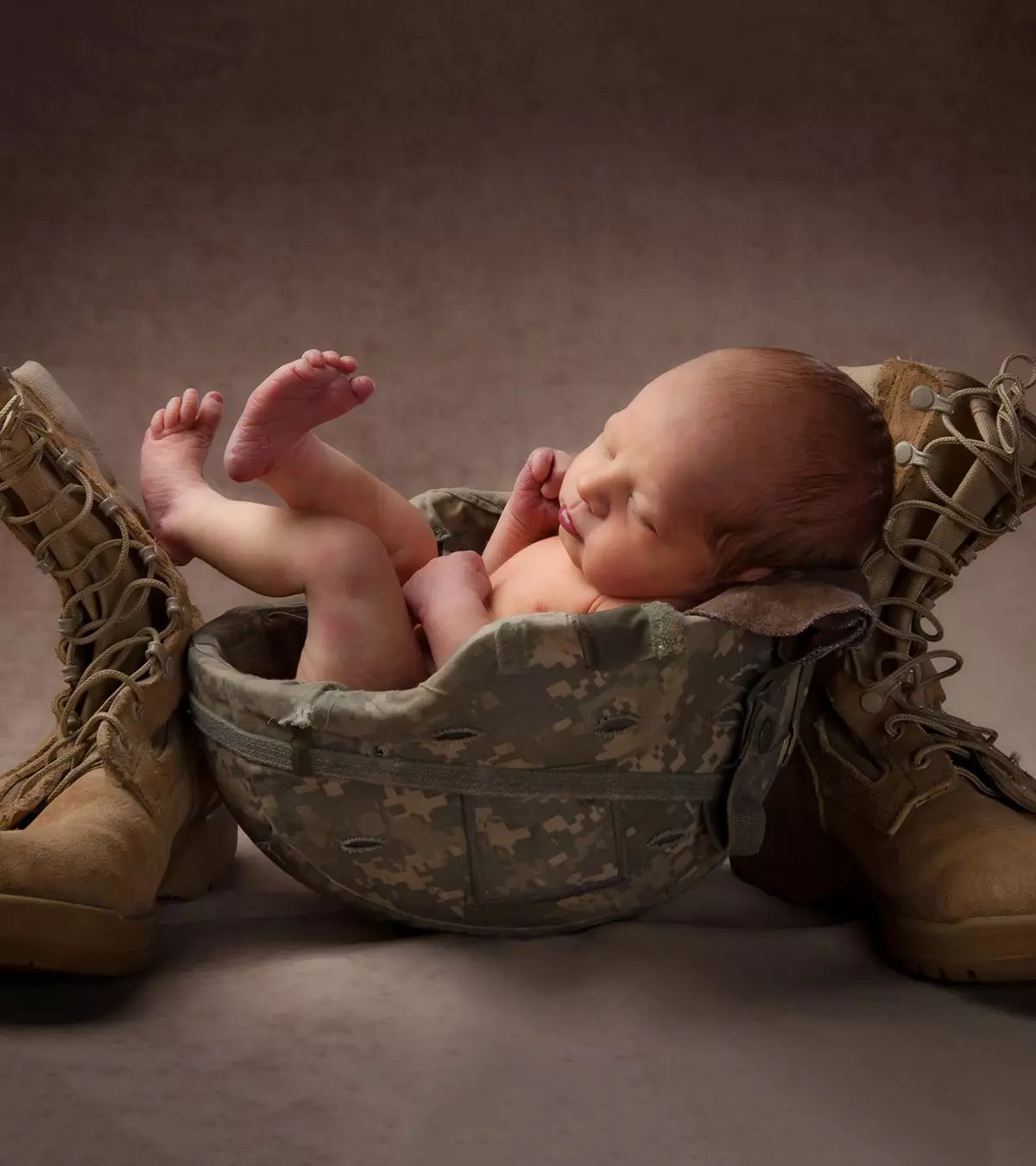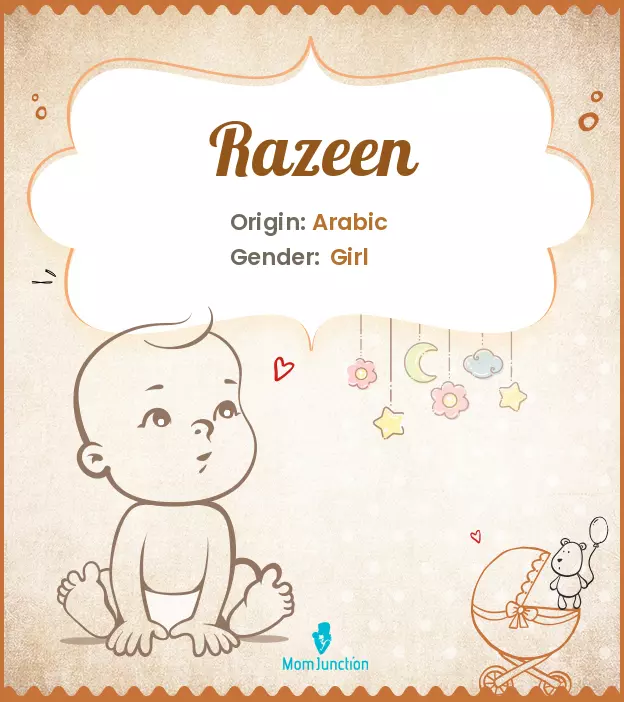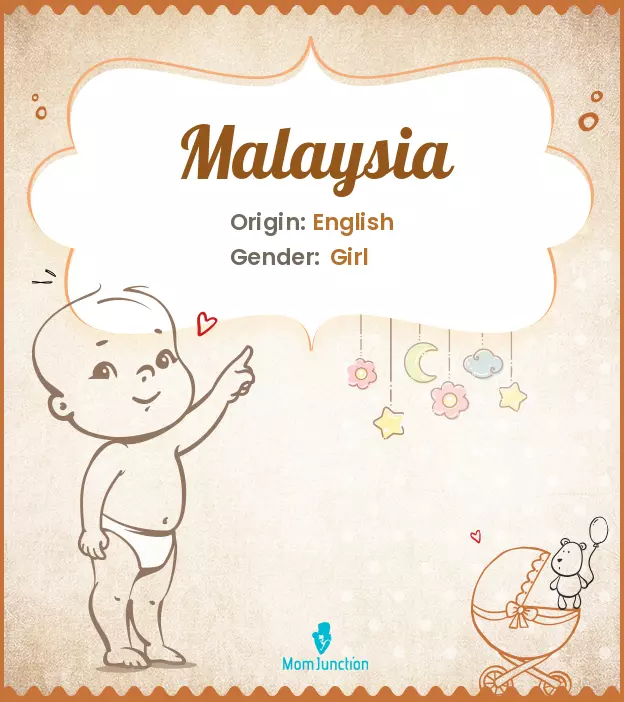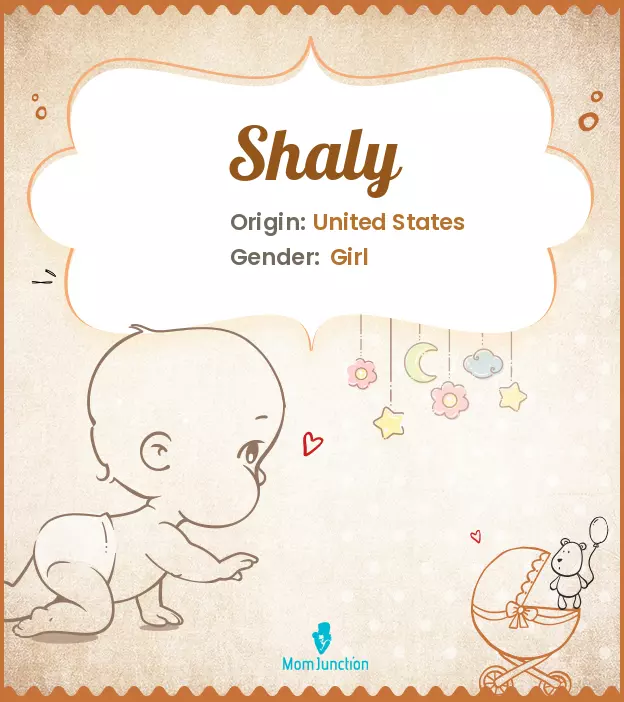
Image: Shutterstock
Royal family last names are easily recognizable because of their popularity and historical connections. The general public admires noble families and showers them with admiration and reverence. Members of royal families enjoy popularity and hold prominent positions worldwide. For example, the Windsors, the British royal family and reigning monarchs in the UK, are well-known globally. Similarly, there are several other noble families in different countries. This post lists the surnames of some royal families known for their wealth, power, and influence.
Popular Royal Last Names Or Surnames
1. Agilolfings
Agilolfings were a noble family that governed the Duchy of Bavaria under the authority of their Merovingian overlords. The origins of the Agilolfings or the title itself remain unclear and lost in the early Middle Ages though.
2. Alpin
The Alpin family was a pivotal royal house in early Scottish history, as they ruled Scotland and nearby regions from the eighth to 11th century AD. It is believed that Alpín mac Echdach, King of Dál Riada and King of the Picts, founded the House of Alpin. The surname Alpin comes from the Scottish Gaelic name Ailpean, which is based on a Pictish word meaning ‘white.’
3. Althan

Althans (also spelled Althanns) are a German nobility that hails from Lower Bavaria. They are one of the oldest German noble families, with roots tracing back to the 12th century. The Althans held influential positions in the Holy Roman Empire and the House of Lords in Austria and Prussia too. The exact meaning of this surname remains uncertain.
4. Andechs
Feudal rulers were common in 12th-century Germany. The Andechs were influential nobles and held titles as counts and dukes in the kingdoms of Austria and Carniola. The Andechs family lineage survives even today, and the Duke of Dießen-Andechs, Ludwig Jozef, is its current head. The name was adopted from the name of a municipality in the Bavaria region.
5. Angelos
The Angelos family was a prominent noble family of the Byzantine Empire during 11th century Greece. The House of Angelos was founded by Constantine Angelos, a Byzantine aristocrat, who married Theodora Komnene, the daughter of Emperor Alexios I Komnenos. This marriage helped him gain greater prominence. The Angelos name continues to present times, although claims of direct lineage can be disputed. The Greek surname Angelos means ‘messenger’ or ‘angel.’ It is also linked to the name Euangelos, which means ‘bringer of good news.’
6. Arco
The Arco family is an old noble family from the commune of Arco in Northern Italy. The Castle of Arco was under their control for several centuries. Members of this family are spread across Germany and Austria through marriage alliances. Arco is derived from the Latin term arcus, meaning ‘bow.’
7. Arlay
Arlay is a French house of nobility and is a part of the bigger House of Ivrea (Anscarids), a noble house in Italy that held significant influence in the Middle Ages. John I of Chalon-Arlay was the founder of this family line. Arlay is a commune in eastern France. The exact etymology of the surname is uncertain, but it is often associated with meadows or grasslands because of the scenic geographic features of Arlay.
8. Artois
The Artois family descended from Louis VIII of France. His younger son Robert I received the commune of Artois as his inheritance and was named the first Count of Artois. The following generations used Artois as their last names. Artois is rooted in different languages. It is believed to be inspired by the pre-Roman Gallo-Germanic tribe name Atrebates, which is derived from a Proto-Celtic word meaning ‘inhabitants.’
9. Astley
Astleys are a noble family descended from Sir Thomas de Astley of Astley, Warwickshire, England. They occupied the rank of Baronetage in the British aristocracy. The Astley Baronetcy, specifically the Astley Baronetcy of Everley, existed until Sir Jacob Astley, 6th Baronet, was elevated to the peerage as Baron Hastings in 1841.
 Did you know?
Did you know?10. Augustenburg
The Augustenburg family is a German-origin noble house and a part of the larger Oldenburg house. Members of the Augustenburg family held hereditary ducal titles for the house of Schleswig-Holstein. The family name refers to the town of Augustenburg on the island of Als in Denmark, which served as the family seat.
11. Baldwins
The Baldwin family has historical ties to the House of Flanders, a medieval ruling family of Frankish origin. The House was founded by Baldwin Iron Arm, the son-in-law of Charles the Bald. The surname Baldwins comes from the Old German given name Baldwin, meaning ‘brave friend.’
12. Bánffy
The Banffy family is an old Hungarian noble family that held many key political positions in the Kingdom of Hungary and the Austro-Hungarian Empire. The Banffy family’s roots trace back to Dénes, from the Tomaj clan in the 12th century. Over time, members of the family intermarried with noble Hungarian and Austro-Hungarian families. They were given the title of Baron by Charles VI and were elevated to Counts by Emperor Franz Joseph I. The family occupied the Bánffy Castle for several centuries (1).
13. Barclay
Also known as Barclay de Tolly, the Barclays are a well-respected noble family of Baltic German settlement. Barclays migrated from Scottish to Russian and German regions towards the mid-17th century. Today, the name is associated more with the name of the Barclays Bank. This Scottish surname is derived from the English place named Berkeley, which comes from the Old English terms beorc and leah, meaning ‘birch’ and ‘woodland or clearing,’ respectively.
14. Bernadotte
The Bernadottes run the current royal house of Sweden, with Carl XVI Gustaf as the head. The Bernadotte family, founded by King Charles XIV John of Sweden in 1818, also ruled Norway for about a century, until 1905 (2). The name Bernadotte is thought to be derived from the ancient province of Béarn in southern France.
15. Borghese
The Borghese is a princely family of Italian descent. They originated from the Siena commune and have occupied important positions in the Vatican, with Pope Paul V belonging to this family. The exact meaning of this surname is not widely known. However, it is believed to have Italian roots, as it is linked to the adjective borghése, meaning ‘burgher,’ referring to an ‘inhabitant or freeman of a town with municipal rights and duties.’
16. Bourbon
The Bourbon family formed the House of Bourbon. Bourbons have ruled large parts of France and some areas of Spain, from the 16th to the 18th century AD (3). The dynasty was founded by Robert, Count of Clermont. The family continues to the present day, with the current head being Louis Alphonse de Bourbon of Spain. The Bourbons are considered by many to be the rightful heirs to the French throne.
17. Bruce

The Bruce family is an old noble family of Scottish ancestry. The most famous member, Robert the Bruce, became King Robert I of Scotland and was known for playing an important role in the Wars of Scottish Independence. The House of Bruce is a revered and respected one in all of Scotland. The surname Bruce is derived from the French place name Brix, meaning ‘the willowlands.’
18. Burgundy
The House of Burgundy was a powerful noble family that ruled the region of Burgundy from 10th century AD to 15th century AD. Initially independent rulers, the family later became closely linked with the Capetian dynasty. The surname Burgundy can refer to the Burgundy region in France, the wine from Burgundy, or the color named after the wine.
19. Campbell
The Campbell family has been a historically powerful and important clan of Scotland. Between 1200 and 1500, the Campbells became one of the most dominant families in Scotland, particularly in Argyll, and were considered the rulers in the Highland areas. The Scottish surname Campbell means ‘crooked mouth (4).
20. Capet
The House of Capet, founded by Hugh Capet, was the ruling family of France (5). The Capets ruled France from 987 to 1328, and Charles IV was the last official King of the direct Capetian line, as he died without male heirs. However, the Capet family lineage is present in many other aristocrats to this day, particularly through the later branches of the Capetian dynasty, such as the House of Valois and the House of Bourbon. The exact meaning of the surname Capet is not known, as it was believed to be a nickname given to Hugh Capet. However, some etymologists believe the surname is related to the Latin word caput, meaning ‘head.’
21. Carafa
The Carafa family hails from Naples, Italy. The family’s influence and prestige have extended through both religious and secular leadership. Members of the family have been clergies, nobles, and art experts in the royal courts since the 12th century. They rose to prominence under the Aragonese dynasty in the 15th and 16th centuries. The family produced sixteen cardinals for the Catholic Church, including Pope Paul IV (born Gian Pietro Carafa) (6).
22. Carolingian
The Carolingians refer to the Frankish nobles who rose to power and governed the Carolingian Empire, the largest political entity in Europe until the 19th century. The name of the Carolingian family originates from its many members named Charles, including Charles Martel, who stopped the Moors from taking over Gaul, and Charlemagne, a great King and Holy Roman Emperor (7).
23. Carpelan
The Finnish noble family Carpelan was an influential court family from the Middle Ages. In 1407, Squire Paval Karppalainen from Vehmaa, Varsinais-Suomi, was granted nobility by King Eric XIII of Sweden. In 1625, when the King of Sweden drew a list of noble family lines, the Carpelans were officially recorded as part of Sweden’s untitled nobility. The exact meaning of the name Carpelan is not widely known; however, some etymologists believe that the surname is derived from the Swedish term karpel, referring to a fish commonly found in Finland.
24. Chalon
Chalons form part of the highly influential Chalon-Arlay family of France and the cadet branch of the House of Ivrea. They are closely tied to Burgundy and the Holy Roman Empire. They ruled over several territories, most notably the counties of Arlay and Orange. The exact meaning of the French surname is not known; however, it is believed that Chalon is derived from the French town Châlons-sur-Marne. The town was widely known for producing blankets; hence, it may have got its name from the Old English term chaloun, meaning ‘blanket.’
25. Cobenzl
The Cobenzls had great influence in Carinthia, Austria. The family’s early settlement can be traced to present-day Slovenia. The family was first recorded in the early 1200s, and most of its members served as diplomats for the Habsburg rulers and the Austrian Empire.
26. Collalto
The Collalto family is originally Lombard people of mixed Italian and German heritage. The Collaltos established themselves as nobility in 17th-century Austria. By the 1800s, the family was considered to be of Princely rank. Members of the family continue to live in Austria and Italy. The family was named after the town of Collalto in northern Italy—Collalto means ‘high hill’ in Italian.
27. Contarini
The Contarinis are an Italian noble family who founded the Kingdom of Venice. They occupied the high rank of Doge, the equivalent of Dukes, apart from other roles like diplomats and ambassadors. Etymologists believe that Contarini is derived from the Italian word conte, which comes from the Latin word comitis, meaning ‘companion.’
28. Cornaro
Another high-ranking Venetian family, the Cornaro family occupied the positions of patricians. The Cornaros are believed to have migrated from Rome around the 1100s. Records show the family being influential in Venice till the end of the 1700s.
29. Dandolo
The Dandolo family was a high-ranking noble family from the Republic of Venice. The family’s wealth and power were at their peak during the early 12th century. The family’s prominence continued with figures like Doge Enrico Dandolo in the 13th century.
30. Dassanowsky
The Dassanowsky family is a branch of Polish nobility that settled in Vienna, Austria, in the 1600s. The family has been a respectable one, producing countless members of the Viennese courts and civic bodies throughout the centuries.
31. Doukas
The Doukas were a high-ranking aristocratic family of the Byzantine era. The family flourished in the 9th to 11th centuries as the Byzantine Empire reached its peak and later dwindled. Some of their descendants are believed to still be found in Greece today, reflecting the lasting legacy of this noble house.
32. Eggenberg
The Styria-based Eggenberg family was powerful in the early 1700s in Austria. The members reached princely ranks and formed the House of Eggenburg. Ulrich Eggenberger is the first documented member of the family, occupying a court position in the municipal ranks. The family’s prominence expanded under the leadership of Johann Anton I von Eggenberg, who became the prince of the family in the 17th century.
33. Estridsen
The Estridsen family rose to power from 1047 to 1412, and occupied the foremost ranks, producing several Kings of Denmark, three kings of Sweden, and one of Norway. The dynasty was founded by Estrid Svendsdatter. Though the monarchs dwindled in the early 1400s, members continued to live and occupy important administrative posts. The exact meaning of the surname is not commonly known, however it is believed to be rooted in Norse language.
34. Ernušt
Ernušt (also written as Ernuszt) is a member of the Hungarian nobility. They are said to have been of Jewish ancestry and settled in medieval Hungary from Vienna. They adopted Catholicism and rose to prominence in Hungary and Croatia during the 15th and early 16th centuries, especially during King Matthias Corvinus’ rule. The Old German name Ernušt means ‘serious’ or ‘earnest.’
35. Fenrich
The Fenrich family was a noble house in Austria that flourished in the late 18th century. This family of German heritage spread its roots in the Austro-Hungary regions by migration and improved their court rank by having many suitable marriages with the House of Ochsenreither von Jockgrim.
36. Ferdinand
The Ferdinand name is all too familiar due to the assassination of Franz Ferdinand, the Duke of Austria. This event had given way to World War I. He was a member of the Habsburg-Lorraine dynasty, a prominent ruling house in Europe. Ferdinand is the Latin variant of the Gothic name Fredenandus, which is composed of two terms: friþus/farþa, meaning ‘peace’ or ‘journey,’ and nanþa, meaning ‘boldness, daring.’
37. Ghetaldi
The Ghetaldi family is believed to have originally migrated from Taranto, Italy, and established themselves in Croatia and Austria. They formed the nobility in the Republic of Ragusa. Some historians believe that the Ghetaldis were ennobled in the Austrian court in the early 1800s.
38. Gille
The Gille family Norway, which was powerful around the 12th century, was a branch of the Hardrada dynasty. The founder of the kingdom was King Harald IV. The word Gille has Middle Irish Gaelic roots and means ‘servant of Christ.’
39. Gravenreuth
The Gravenreuth was a German noble family who ruled Grafenreuth around 1180. The family continued to be influential till the 19th century. Some members of the family reached the levels of the Upper Palatinate, a high administrative post. They were related to the Sparneck family, another notable noble lineage in Germany.
40. Grimaldi
The famous House of Grimaldi originated from Genoa and ruled Genoa and Monaco. The family was founded in 1160 and continues to rule till the present day. The current head of the royal family is Albert II, the Prince of Monaco, who ascended the throne in 2005. The name Grimaldi is derived from the Old German name Grimwald, which is composed of two terms: grimo, meaning ‘mask,’ and walt, meaning ‘power’ or ‘authority.’
41. Grimani
The Grimani family was one of the most prominent and influential families in Venice. Members of the Grimani family held important positions, including Doge, Bishop, Patriarch, and Cardinal. One notable member, Antonio Grimani, served as Doge of Venice in the early 16th century.
42. Gusic
The Gusics were one of the twelve noble tribes in the Kingdom of Croatia. Direct descendants of the Gusics carry the family surname to present times. The name is said to be derived from the Croatian word guska, which refers to a ‘goose’.
43. Habsburg
The Habsburg family, also known as the House of Austria, is one of the most influential royal families in European history. The Habsburgs ruled vast territories, most notably the Austro-Hungarian Empire, until its dissolution after World War I in 1918. The current head of the family is Karl von Habsburg, an Austrian politician.
44. Hardrada
Members of the noble Hardrada family had been rulers of Norway and Ireland. The founder Harald Hardrada, popularly known as Harald III of Norway, ruled as King of Norway from 1046 to 1066 AD. In Old Norse, Hardrada translates to ‘hard ruler’ or ‘tyrant.’
45. Harviala
Members of the Harviala clans controlled large estates as landlords in Finland. The seat of the family rule was situated in the erstwhile province of Vanaja. Descendants of the family have occupied positions of Councilors in Sweden.
46. Henikstein
Henikstein were Jewish merchants who later became part of the Austrian nobility. Heniksteins were converted to Catholicism around the 1700s. Some members also rose to high ranks in the military during the Austro-Prussian war of 1866.
47. Herbert
William Herbert, a soldier and politician who earned the nickname Black William, founded the Welsh-originated nobility in the 1400s. The coat of arms of the Herbert family contains three upright lions that signify power and courage.
 Trivia
Trivia48. Hesse
The Hesse family is connected to the powerful House of Brabant. Its members occupied high ranks in the monarchy of Germany. Founded in the 13th century, the dynasty continued till the final ruler Ernest Louis in 1918, following World War I and the collapse of the German monarchy. The family still has its members in high government seats and is headed by Donatus, Landgrave of Hesse.
49. Hohenstaufen
The Hohenstaufen, also known as Staufer, were German rulers of the Holy Roman Empire from 1100 to the 1300s. It is believed that the Hohenstaufen family derived their name from their castle in Swabia (8). Hence, they are also known as the Swabian dynasty. The most prominent among the Stauffer families to rise to power were King Frederick in 1155 and Henry VI in 1191. During the Hohenstaufen reign, the Roman Empire reached the pinnacle of its power.
50. Hohenzollern
The Hohenzollern family is a German family that was once a royal dynasty. Members of the family included kings, emperors, and princes in the erstwhile German and Prussian empires. The dynasty gets its name from the Hohenzollern Castle in Swabia, which was originally known as Zolorin or Zolre.
51. Horn
The Horn family was a prominent noble family originally part of the Swedish nobility in the 14th century. The earliest known member of this family was Olof Mattsson, whose seal had the drinking horn on it. Several members of the family went on to be ennobled; however, after the Finnish war, the Horn family was removed from the list of noble families.
52. Howard
Founded by John Howard, the 1st Duke of Norfolk in the late 1400s, the Howard family went on to become a powerful English family. Members of the family occupied positions of Earls and Dukes in the 15th and 16th centuries. The Howard line continues to the present day, with Edward Fitzalan-Howard serving as the 18th Duke of Norfolk.
53. Hoyos
The Hoyos family has roots in Burgos, a region in Old Castile, Spain. The first official records recognizing their noble status appear in documents from 1527 and 1532. Several members served as counts and ambassadors to Kings. In the 1600s, the family’s position was elevated to High Counts. However, their prominence diminished by the late 1700s.
54. Kantakouzenos
Kantakouzenos, also spelled as Cantacuzenos, were a prominent Byzantine Greek noble family, particularly in the 13th and 14th centuries. Their influence reached its peak during the reign of John VI Kantakouzenos, who served as Byzantine Emperor from 1347 to 1354. The earliest member of the Kantakouzenos line was John Kantakouzenos. The exact meaning of the surname is not known, but many believe that it is derived from the Greek term kata-Kouzenan, meaning ‘near or at Kouzenas.’
55. Knýtlinga
The Danish family of Knýtlinga was a royal dynasty in England and many parts of Scandinavia during the Middle Ages. Of the many members of this clan, Cnut the Great was probably the most feared and popular. Their influence began to decline after Cnut died in 1035, and by 1042, his descendants had lost control of England. This Danish surname translates to ‘the descendants of Cnut.’
56. Komnenos
Komnenos, also written as Comnenus, were members of the Byzantine imperial dynasty that ruled the Byzantine Empire from 1081 to 1185. Manuel Erotikos Komnenos, a high-ranking military official, is traced to be the earliest documented member of the family. The Komnenos family lost the imperial throne in 1185. However, they still had a lot of power—they formed a new empire in Trebizond in 1204. They also married into other powerful families, which helped them stay influential for a long time.
57. Kulinić
The house of Kulinić was founded by Kulin, also called Ban Kulin. He ruled Bosnia as a vassal of the Byzantine Empire and then the King of Hungary and later made Bosnia an independent state. He was succeeded by his son Stephen Kulinic to the throne after his death in 1204.
58. Kurki
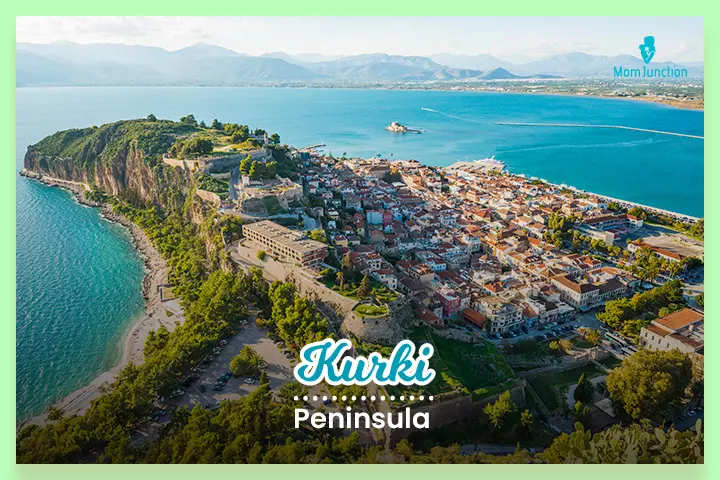
The Kurki family, also referred to as the Kurck, was a baronial family from Laukko Finland. The family was known for holding the famous manor of Laukko for several centuries. A prominent member of the family was Arvid Kurck, who became a Swedish Count in the early 1800s. Kurki or Kurck in Finnish means ‘crane.’
59. Lamberg
It is an Austrian noble family whose members held significant positions in the Holy Roman Empire and the Austro-Hungarian Empire. The meaning of the surname Lamberg remains a mystery, but some etymologists think that the name is composed of an unknown first element attached to the German suffix berg, meaning ‘mountain hill.’
 Trivia
Trivia60. Lapčan
The Lapčan family was one of the 12 prominent noble families that supported the Kingdom of Croatia from the 12th century. It is believed that the family derived their name from the Labe River, where the Lapčans first settled. In later centuries, Lapčans acted as vassals to the Kingdoms of Croatia and Hungary.
61. Lekapenos
The Lekapenos family was founded by Theophylact, who had a humble beginning as a peasant in Armenia. He helped save Emperor Basil I from the Arabs. As a reward, the Emperor appointed him as the imperial guard. His son, Romanos I Lekapenos went on to become a powerful commander in the Byzantine navy. He later became the Emperor of Byzantium and ruled from 920 until he was removed from power in 944.
62. Lombards
The Lombard family migrated from Germany to the Italian peninsula around 560 AD and then ruled the region for two centuries. The Lombards took part in the Gothic Wars and also led revolts against the budding Byzantine Empire. Their legacy remains through the name of the region of Lombardy in northern Italy.
63. Loredan
The House of Loredan was one of the richest and highest nobles in Venice. This Venetian family had the honor of producing a long list of statesmen, doges, military and naval commanders, lawyers, and more. Among Venetians, the Loredan name is of great reverence. The exact meaning of the surname is not widely known. However, some etymologists believe it derived from the Italian word Laureati, which means ‘from the town of Loreo.’
64. Lorraine
The House of Lorraine was founded when they inherited the Duchy of Lorraine in 1473. The Lorraines had influence in Austria, Germany, and France, with members joining other noble families through marriage alliances. One of the most powerful alliances was the marriage of Duke Francis of Lorraine to Maria Theresa of Austria. This alliance strengthened their influence in Austria and led to the creation of the House of Habsburg-Lorraine. The current head of the House of Lorraine is Karl von Habsburg.
65. Lothbrok
Ragnar Lothbrok is a legendary Viking hero believed to have ruled Denmark and Sweden. His conquests have been mentioned frequently in Viking poetry as well as Norse literature. Lothbrok was brave enough to lead raids against the British Isles and the Carolingian Empire in the 9th century. The descendants of Lothbrok are found in Scandinavian and Icelandic regions.
66. Luitpolding
The Luitpolding dynasty occupied power and influence in Medieval Germany and controlled the Duchy of Bavaria in the 9th and 10th centuries. The founder of the family was Margrave Luitpold from Bavaria.
67. Madi
The Madi family is believed to be a patrician family from the city of Zadar in Croatia. Historians say that they played a significant role in Croatian politics for many years, especially during the 10th and 12th centuries.
68. Mattei
The Mattei family, a prominent Roman noble family during the Renaissance, occupied high papal positions. Eight members of the Mattei family reached the position of Cardinal in the Catholic Church (9). The family is also known for its renowned art and painting collections.
69. Maxwell
The Maxwells were a powerful Scottish noble family that held the castle of Caerlaverock for centuries. The members of this family held various titles as Lords and Earls. The last Chief of the Maxwell clan was William Maxwell of Carruchan. Following his passing, the position of Chief has remained vacant.
70. Medici
This surname is known across Europe but is most prevalent in Italy because the powerful Medici family governed Florence for over three centuries. In Italian, Medici is the plural of the word ‘medico’ which means ‘doctor.’ It is believed that the Medici family emigrated from the Mugello region in Northern Tuscany.
71. Merovingian
The Merovingian surname has been derived from Merovech, who was the King of the Salian Franks. The Franks ruled over the Merovingian dynasty from the mid-fifth century until 751. The Franks initially served as mercenaries in the Roman army of northern Gaul and later became independent, with their rulers eventually identifying themselves as ‘Kings of the Franks.’
72. Mlinarić
The Mlinarić family was a Croatian aristocratic family in the 17th century who later branched out to Hungary and Austria. King Ferdinand III officially granted noble status and a coat of arms to Matthew Mlinarić and his brother Ambroz on March 20, 1655, in Pressburg. The family coat of arms bears a shield signifying strength and resilience.
73. Mocenigo
Known as one of the most famous patrician families of the Venetian Republic, this family produced many noteworthy military leaders, scholars, churchmen, diplomats, and other leaders.
74. Montecuccoli
The Montecuccoli family, a prominent name in Italian nobility, was originally known as the Da Frignano or Da Feroniano family. They later went by the surname Corvoli but eventually adopted the name Montecuccoli, likely in honor of the impressive castle. The Montecuccoli family’s lands once stretched across the entire central Frignano region, reaching as far as the areas around Reggio Emilia and Bologna.
75. Morosini
The Morosini family was a prominent noble family in Venice, producing many doges, generals, admirals, and statesmen who played significant roles in the Venetian Republic. It is speculated that they arrived at the Venetian lagoon after eluding the invasion of Attila in northern Italy.
76. Mountbatten
The Mountbatten family was originally a part of the German princely Battenberg family. To distance themselves from their German origins during World War I, members living in the UK adopted its English version, Mountbatten. When Prince Philip, Duke of Edinburgh, adopted the surname Mountbatten, it significantly increased the family’s prominence. The Mountbatten family is connected to the Royal Windsor family through the marriage of Prince Philip to Queen Elizabeth II. The present family head is George Mountbatten.
77. Munsö
The House of Munsö, also known as the House of Björn Ironside, were the kings of Sweden during the Viking Age. It is believed that House of Munsö is named after the island of Munsö, where the family may have had its power base. The name House of Björn Ironside comes from the founder of the dynasty Björn Ironside, who is seen as a legendary and heroic figure. A succession of rulers of the Munsö dynasty ruled between the 12th and 13th centuries as mentioned in the Icelandic chronicles.
78. Nassau
Nassau, which started as a county, evolved into a principality and eventually a duchy. Founded by the brothers Walram and Otto, the House of Nassau has two branches. The Nassau name is a part of the name for the Dutch royal family, Orange-Nassau, and its secondary titles of Prince or Princess of Orange-Nassau.
79. Nostitz
The Nostitz family is an old noble family originating from Saxony, Germany, whose noble status dates back to the Middle Ages. The family adopted the name from the town of Nostitz in modern-day Germany. Many members of the family rose to the rank of Count, especially in the 1700s. In present times, the German journalist and photographer Nick Nostitz is a well-known descendant of this family line.
80. Notthafft
The historical backdrop of the family began in Egerland, Czech Republic, with palaces in Wildstein (presently Skalná), Falkenau (Sokolov), and Thierstein toward the end of the 12th century. Three lines existed up to the 18th century, named by the prominent palaces Wernberg, Weißenstein, and Bodenstein. The male line of the Notthaft family is believed to have become extinct in the mid-20th century, as the last male descendant passed away around 1952.
81. Novosel
The Novosels were a powerful Croatian noble family who played a significant role in the Croatian Kingdom and the later Habsburg Empire. In 1744, Empress Maria Theresa bestowed a noble title upon Luka Novosel for his heroic defense of the Kostajnica fortress against the Ottoman forces. Thereafter, the family held several important positions in the Royal court.
82. Oldenburg
It is a European dynasty originating from Northern Germany and having strong ties with Denmark. They have also ruled many other countries and territories, including Iceland, Greece, Norway, Russia, and Sweden, apart from Oldenburg. The surname comprises two Old German terms: ald and burg, meaning ‘old’ and ‘fortress fortified town,’ respectively. The current kings of Norway and the United Kingdom are patrilineal descendants of a branch of this family.
83. Orange
The House of Orange derived its name from the principality of Orange. This dynasty has secured an important place in the history books of the Netherlands. The dynasty was established in 1515 after Hendrik III of Nassau-Breda, a German nobleman, married Claudia of Châlon-Orange, heiress to the principality. When their son René de Chalon passed away in 1544, without any children, he left all his estates to his German cousin, William of Nassau. William, later known as Prince William I, went on to establish the House of Orange-Nassau (10).
84. Orleans
The House of Orleans is a French noble dynasty that was founded in 1661. The surname Orleans comes from the Latin Aurelianum, which means ‘of Aurelius.’
85. Orseolo
The House of Orseolo was founded by Doge Orso of Venice in 726. The Orseolo family members included Doges and many other high-ranking administrative officers who helped strengthen Venetian influence in the Adriatic region.
86. Orsini
Orsini is a family name of Italian genesis. It came from the Latin word Ursinus, which means ‘bear like’. During the Middle Ages and Renaissance, the Orsini family was one of Italy’s most powerful noble families, having great influence in the Papal States. The Orsini family included popes, cardinals, and numerous bishops as well.
87. Palaiologos
The Palaiologos were a Greek family who occupied nobility in the Byzantine Empire, from 1261 until the fall of Constantinople in 1453. The surname is believed to be composed of the Greek words palaios logos meaning ‘old word.’ People with the surname Palaiologos can be found in Greece, and members claim a direct connection to the Palaiologos of lore.
88. Pfeffel
The Bavarian-German Pfeffel family, originally of modest origins, rose to prominence through legal and diplomatic achievements. They were of humble beginnings occupying common positions in lower-level courts. The Pfeffel family was officially inducted into nobility by the King of Bavaria in the 19th century.
89. Pignatelli
The Naples clergy and nobility have been known for their luxury and contributions to art and culture. Pignatelli was a Neopolitan family that had influential members in various spheres and held important titles, including the title Prince of the Holy Roman Empire. The most famous among them was Antonio Pignatelli, who became Pope in 1691.
90. Pranckh
The Pranckh family was one of the nobility in Styria and nearby regions. The family’s early history can be traced to 1135 when Wolfkerus de Branka attested a charter related to an endowment to Admont Abbey, establishing the family as one of Austria’s oldest lineages still in existence. Members of the family spread out in Germany and Italy through marriage alliances and rose in ranks, and today, they can be found in Austria, Germany, France, and the US.
91. Priuli
The Priulis were an aristocratic family from the Republic of Venice in the 14th century. Members of the family occupied a variety of high posts, including Doge, in Venetian nobility.
92. Querini
The Querini family was considered one of the twelve founding families of Venice (11). By the end of the 1300s, they became one of the richest noble families. The Querini family is known to have commissioned many art and paintings. Descendants of the Querini family continued to occupy ranks in Venetian political circles till the 1800s.
93. Rothschild
The Rothschild family is a prominent noble family of Jewish origins. The family was founded by Mayer Amschel Rothschild, who created a banking dynasty that rose to considerable prominence over the years (12). The Rothschild family spread throughout Europe and America expanding their businesses. They continue to be one of the wealthiest families in the world. The surname is composed of the Middle High German terms rot and schilt, meaning ‘red shield.’
94. Salian
Salian was a family that rose to a major dynasty in the Holy Roman Empire. From 1027 to 1125, the Salian family produced four Kings to the throne. The dissolution of the dynasty happened around 1125, but the Salian blood exists to date.
95. Samborides
The Samborides were a ruling clan that had influence in the northern regions of Poland. Their presence was most important in the region of Pomerelia. The Samborides lost their dynasty around the late 1200s, but the name continued to exist.
96. Sanudo
The history of the Sanudo family is debatable as there are many versions available. However, it is commonly believed that the Sanudo family was officially founded by Marco Sanudo after he was granted the Duchy of the Archipelago following his participation in the Fourth Crusade. Marco Sanudo also became the Duke of several Aegean islands, and his descendants continued to hold various positions in the Venetian courts and beyond. However, their prominence began to fade in the late 1500s and early 1600s.
97. Savelli
The wealthy and influential Savelli family rose to power in 13th-century Rome. Their influence extended through their involvement in both political and religious matters, and the Savellis had many marriage alliances, resulting in their lineage being continued indirectly to other families.
98. Schleswig
The Schleswig family was a branched family of the bigger and powerful Danish Oldenburg family. They have been recorded to have had high seats from the 1500s. They adopted their family name from the port town of Schleswig, where the family held their seats.
99. Sinclair
Sinclair is a Scottish clan who had their presence in Caithness and Lothians regions as early as the 1100s. The Sinclairs are well-respected for their strong national allegiance and significant role in the Wars of Scottish Independence. The member Sir Oliver Sinclair enjoyed the position of Baron of Roslin in the late 1400s. The name Sinclair is derived from Latin and means ‘renowned’ or ‘pure’.
100. Sinzendorf
The Sinzendorf family was an influential noble family in the Kingdom of Austria and Bavaria. The mention of the Sinzendorf family name goes back to the 1300s. They occupied high ranks in the Kingdom of Bavaria in the 11th century and rose to prominence by the 17th century as they held influential positions in both regions. However, by the mid-1800s, the family line ran out of male heirs.
101. Somhairle
Somhairle, also known as Somerled, was a Gaelic-Norse family who ruled in medieval Scotland. Through marital alliances and conquests, the founder Somerled was able to expand his powers across Ireland, ruling from the seat of Argyll and Isles. His descendants, including the MacDonald family, were prominent in both Scotland and Ireland.
102. Sonderburg
The Sonderburg family was a branch of the House of Oldenburg and held the title of Duke in 17th-century Denmark. It is believed that the Sonderburg family adopted the name from the town of the same name located in Southern Denmark.
103. Sparneck
The Sparneck family was a noble lineage from the Franconia region of Germany. Historical records indicate that the family held significant administrative posts during the Middle Ages. Some etymologists believe the family took their name from the market village of Sparneck. Many descendants of the Sparneck family still live in the surrounding areas.
104. Stanley

The Stanley family is an ancient English family with close ties to the famous Audley family, and later descendants refer to them as Stanley-Audley. The first mention of Stanley goes back to 1086 in the Domesday Book, where it was mentioned as a settlement with a recorded population of 1.7 households (13). The name Stanley is derived from Old English and means ‘stone clearing.’
105. Stewart
The Stewart family, also known as the House of Stuart, is an aristocratic family of Scotland. Robert II was the first monarch of the Stewart lineage, and his descendants went on to occupy royal positions in the English and Irish royalty (14). The Stewart line ended in the early 1700s, with the last head being Queen Anne of Great Britain (15). Stewart in Scottish means ‘guardian’ or ‘warden.’
This royal surname is a much-loved given name in the modern world. A blogger named Stewart shares his experience of having a Scottish surname as a given name. He says, “I was named after Rod Stewart from the popular beat combo The Faces. However, my dad decided that Stewart rather than Rod would be a more appropriate name. I am inclined to agree with him…I have always been told that Stewart is the Scottish way of spelling the name. This suits me and seems to be a way of connecting with my heritage as legend has it that my great-great-great-grandfather Anderson was originally Scottish and sailed down via Ireland before settling on the Kentish coast. However, when I went to Edinburgh Castle earlier this year, we found a sign with “The Royal House of Stewart” and whilst getting a photo of me in front of it, one of the members of staff informed me that it wasn’t actually the Scottish spelling. I have just found the below on Wikipedia: Stuart is a traditionally masculine given name as well as a surname. It is the French form of the surname Stewart. The French form of the surname was brought to Scotland from France by Mary Stuart, in the 16th century. Further internet research suggests that the Mary Queen of Scots changed it from Stewart to Stuart to ensure the French could pronounce it correctly as they would usually render “w” as “v” (i).”
106. Strozzi
The Strozzi family was one of the richest families in Florence, Italy. They were considered to be rivals to the powerful Medici family. They reached their highest rankings in the 1400s with many family members occupying positions in the Royal courts. The Strozzis were known for their political acumen.
107. Supplinburger
Supplinburger is the family that descended from the German Emperor Lothar III. The family got its name from the Supplinburger castle in Saxony, Germany, which they controlled and used as their base of power. The Supplinburger rose to its full prominence in the 1100s when many family members occupied positions equivalent to Dukes and Counts.
108. Taczanowski
The Taczanowski family was a prominent and old noble family, with roots traced back to the Taczanów region. Some historians believe they may have borrowed their name from the estate Taczanów in the 15th century. They were loyal subjects for the King of Prussia in the mid-1800s, for which they were raised to the title of Count.
109. Tschugguel
The Tschugguels have their origins in the South Tyrol region of Italy. In 1530, Mayor Leonhard von Tschugguel was elevated to nobility and presented a coat of arms by Archduke Ferdinand. Some etymologists believe that the surname means ‘oak at Tschueggsee’ and comes from an old story in Austria about a huge oak tree that is a thousand years old.
110. Tudor
Tudor was an old line of nobility in England who ruled England, Wales, and Ireland. The Tudor dynasty was started by Henry VII after he won the Wars of the Roses and became the king (16). The family rose to prominence in the mid-15th century by stabilizing power through a succession of wars. Tudor is a Welsh word meaning ‘ruler of the people.’
111. von Neumann
The members of the von Neumann family were Jewish-descent families who settled in Austria in the 1800s. Some historians say that Philip von Neumann held the position of Baron in Rome in 1830. They rose in ranks in the kingdoms of the Austro-Hungarian Empire during the 19th and 20th centuries.
112. von Schmitt
The von Schmitt family was a high-ranking noble family in the Kingdom of Bavaria, in present-day Germany, in the 1800s. The first documented member of the family was Johannes Kaspar Schmitt, who held the position of councilor. In 1839, the Netherlands recognized this family as nobility without title, denoted by the honorific Jonkheer. The name Schmitt is derived from the word smith, meaning ‘blacksmith’ or ‘metalworker’.
113. Windsor
The Windsors are the reigning royal family of the United Kingdom and are among the most well-known royal houses worldwide. The House of Windsor started in 1917 when King George V decided to change the British Royal Family’s name. Before that, they were known as Saxe-Coburg-Gotha. In Old English, Windsor means ‘riverbank with a windlass.’
Discover More Names
When you have to choose a name for your baby, a few hundreds of names may not be just enough. Keep digging our mine of baby names until you find that one precious gem.
Illustration: Royal Family Last Names From Across The World

Image: Stable Diffusion/MomJunction Design Team
Frequently Asked Questions
1. Do all members of the British royal family have the same last name?
No, the British royal family members are known by the name of their royal house or by a British surname. Their surname may differ for every member, and many have not even adopted a surname.
2. Why don’t members of the British royal family use their last name?
The British Royal family did not have a last name before 1917 and the surname Windsor was confirmed by The Queen in 1952. Since the British Royal family is well-known worldwide, they probably do not feel the need to use a last name.
3. How are last names assigned to members of a royal family?
Most royal members take the last name of the house of their father. For instance, when Prince William and Prince Harry served in the military, they went by the surname Wales because their Father King Charles was known as Prince of Wales.
4. In what circumstances do members of a royal family use last names?
Royal family members usually use their last names on occasions such as marriages. However, they don’t need to use a surname. Even when signing official documents, they may use their family’s territorial designation instead of their surname.
5. How do royal family last names differ from other aristocratic naming conventions?
Members of most royal families are known by their royal titles, while aristocrats are known by their ranks and class. Royal family members are addressed as King, Queen, Prince, and Princess while aristocrats are given the titles Noble, Lord, and Lady. The rank of aristocrats can change and so does their title.
Royal family last names carry decades of history, stories, and inheritance. These surnames have left an indelible mark on history and will continue to do so. You may find such deep connections to history and cultural heritage in royal girl names and royal names for boys, as well. In this elaborate post, we have curated an extensive list of royal family surnames, their stories, and history. You can use this post to educate your children about royal families while improving your knowledge as well.
Infographic: Royal Last Names Or Surnames From Europe
If you are curious about the royal surnames from Europe and want to know more about them, your quest stops here. In the following infographic, we included a list of royal surnames that are highly known. Do give it a read and also share it with your friends.

Illustration: Momjunction Design Team
Key Pointers
- Royal family last names carry an aura of regality, authority, power, and influence.
- These surnames have a long history and are associated with noble families from the UK and various European countries.
- Royal family surnames commonly have topographical or habitational origins based on the area the family originated from or ruled.
- These surnames also have meanings related to valor, nobility, occupations, and positions of power.
- Some unique royal family last names are Arlay, Grimaldi, Hohenzollern, Merovingian, and Samborides.
The Royal Family doesn’t have a last name – but what is their official title? Find out in this video!
Personal Experience: Source
MomJunction articles include first-hand experiences to provide you with better insights through real-life narratives. Here are the sources of personal accounts referenced in this article.
i. What’s in a name?;https://aboynamedstew.com/category/my-name/
References
- A Changing Castle.
https://www.wmf.org/monuments/b%C3%A1nffy-castle - Birth House of Jean-Baptiste Bernadotte.
https://curate.nd.edu/articles/figure/Birth_House_of_Jean-Baptiste_Bernadotte_Pau_View_within_the_courtyard/24829464 - The Rise and Fall of the House of Bourbon.
https://smithsonianassociates.org/ticketing/programs/rise-and-fall-of-house-of-bourbon - Clan Campbell History.
https://www.ccsna.org/clan-campbell-history - Capetians Royal House of France.
https://projects.mcah.columbia.edu/medieval-architecture/htm/ms/ma_ms_gloss_capetian_house.htm - The Cardinals of the Holy Roman Church.
https://cardinals.fiu.edu/bios1536.htm - Carolingian Dynasty
https://www.worldhistory.org/Carolingian_Dynasty/ - About.
https://houseofhohenstaufen.org/about.html - The Cardinals of the Holy Roman Church.
https://cardinals.fiu.edu/bios1833.htm - Kingdom of the Netherlands.
https://www.almanachdegotha.org/id25.html - The Querini Stampalia Family.
https://www.querinistampalia.org/wp-content/uploads/2023/04/ENG_narrativo_QUERINI.pdf - The Rothschild Family.
https://www.rothschildarchive.org/family/ - Stanley.
https://opendomesday.org/place/SE3422/stanley/ - History of the Stewarts.
https://www.stewartsociety.org/history-of-the-stewarts.cfm?section=famous-stewarts&subcatid=16&histid=140 - Queen Anne.
https://www.hrp.org.uk/kensington-palace/history-and-stories/queen-anne/#gs.jvxlvu - An Introduction to Tudor England (1485–1603).
https://www.english-heritage.org.uk/learn/story-of-england/tudors/
Community Experiences
Join the conversation and become a part of our nurturing community! Share your stories, experiences, and insights to connect with fellow parents.
Read full bio of Shikha Thakur
Read full bio of Srija Chanda Burman
Read full bio of N Pravenchandra Singh









